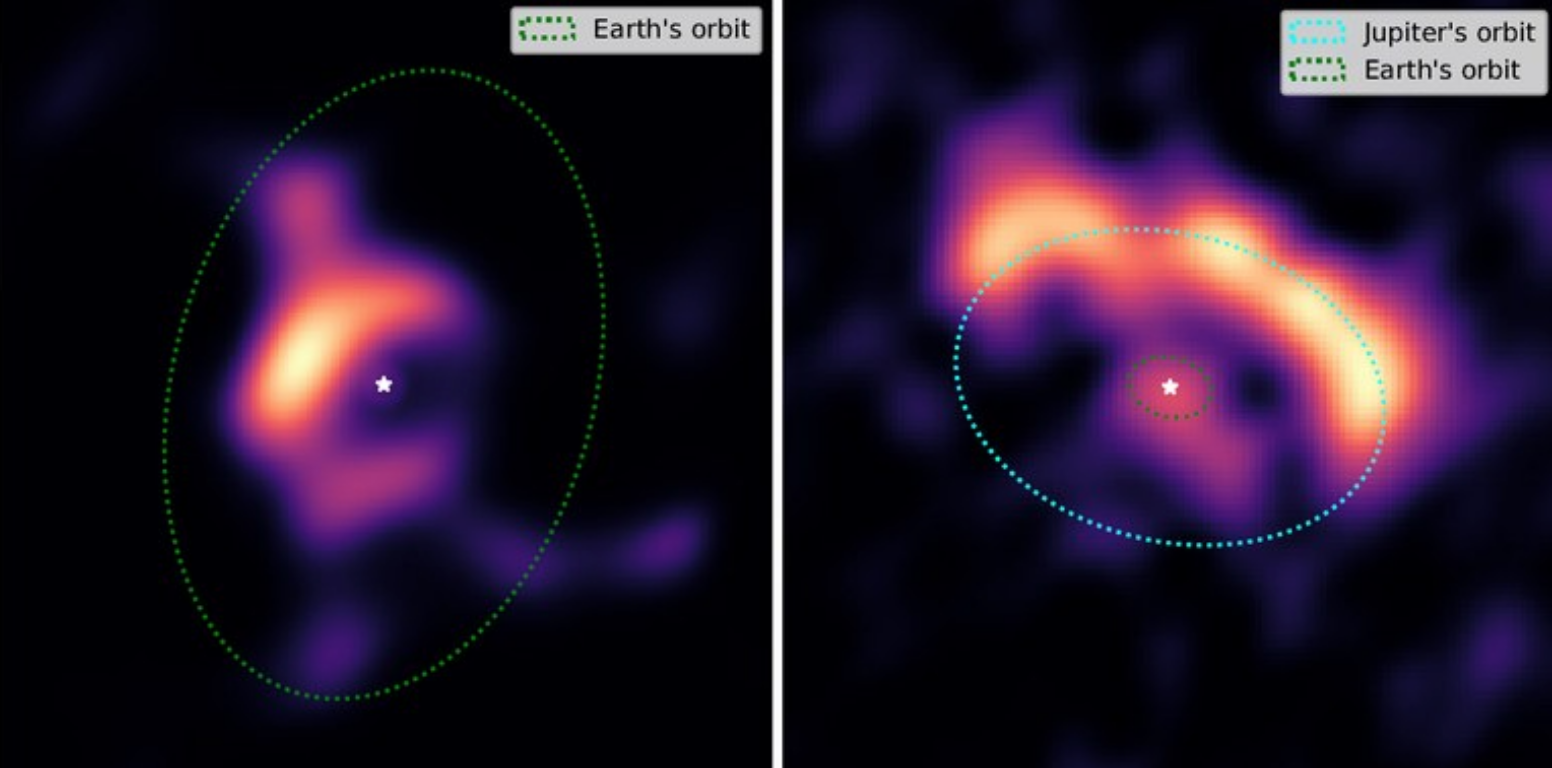Using telescopic observations and “advanced mathematics,” an international team of astronomers has captured new images of planets forming around stars. The images reveal planet formation in a new light; particularly in regards to the formation of rocky planets like our own. According to the team of astronomers, distinguishing this kind of detail from Earth would be the equivalent of observing a single hair from over six miles away.

The astronomers described the images and their observation methods in a paper published in Astronomy & Astrophysics. To make the observations, the team used light collected by four telescopes at the Very Large Telescope observatory in Chile.
In total, the astronomers captured 15 images of the inner rims of planet-forming disks—or protoplanetary disks—all of which are hundreds of light years away. These protoplanetary disks consist of dense gas and dust surrounding a young, newly formed star. The unrelated NASA visualization of a protoplanetary disk, below, gives a good sense of what they look like.
“Distinguishing details at the scale of the orbits of rocky planets like Earth or Jupiter… is equivalent to being able to see a human on the Moon, or to distinguish a hair at a 10 km distance,” the study’s principal investigator, Jean-Philippe Berger of the Université Grenoble-Alpes, said in a press release (via Futurism). “We needed to visualize these details to be able to identify patterns that might betray planet formation and to characterize the properties of the disks,” Berger added.
To create the images, the astronomers used the aforementioned light gathered by the European Southern Observatory’s telescopes in Chile, as well a mathematical reconstruction technique. Using the technique, the astronomers were able to remove the light coming from the disks’ parent stars. As a result, the astronomers made out protoplanetary disks within five astronomical units of their parent stars in incredible detail.

J. Kluska, et al.
The images immediately above are of the protoplanetary disks around the R CrA (left) and HD45677 (right) stars. Because of the removal of the real stars’ light, the astronomers denote the stars’ locations with the white star symbols. The orbits of Earth and Jupiter are provided for distance references.
Looking forward, the team of astronomers is going to do additional research into irregularities spotted in the images. “You can see that some spots are brighter or less bright,” Berger said in the press release. He added that “this hints at processes that can lead to planet formation.”
Featured Image: NASA

